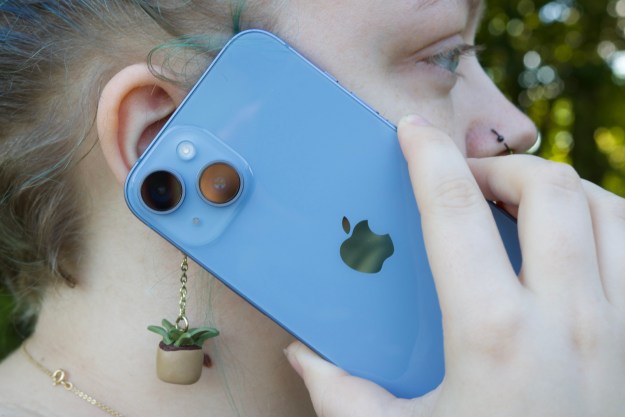There are a number of interesting things coming out of Computex in Taiwan this week. The two that initially stood out were from AMD’s ATI unit and NVIDIA. Both promise a dramatic change in how some of us do things and with only few days to go till the iPhone launch, one of them could redefine the competitive landscape. Let’s chat about how these announcements could change our mobile future.
AMD XGP
Typically you have to make a hard choice between having something that is portable and having something that is powerful. The laptop that is the best example of this is the Macbook Air. It’s incredibly sexy but when it comes to doing what people often do with Apple PCs, create or edit multimedia or graphics the performance of this product just isn’t acceptable. With the built in battery, even if you were able to figure out to make a good graphics system not melt the laptop (graphics chips put out a lot of heat) it would do really ugly things to your battery life.
Certainly you could go to a larger laptop to get better performance and battery life but that means you have to give up on your dream of having the thinnest and most portable product you can find. Hybrid solutions (which use an integrated low power part on the road and switch to a higher performance discrete graphics processor when you need it) are still an option but you still have to deal with heat the high performance graphics part puts out and that means you have to grow the size of the system and probably put in noisier fans.
In addition, graphics change about every 6 to 9 months and a laptop is typically good for 2 to 3 years which means after all of those size and weight sacrifices you basically have an underperforming high performance system within a year of its purchase.
But, if you think about it, generally you’ll likely only need this graphics performance when you are working from your home or office. So wouldn’t it be cool if you could separate the high performance processor from the laptop and leave it in your office? That way you could plug your light laptop into it and have both the portability you want and the performance you need when and where you are likely to need it? And, were it separate, you could update it without replacing the entire laptop which is probably perfectly good.
That is what AMD announced with their XGP external graphics platform that supports up to three external monitors (4 if you include the laptops own monitor) and provides the benefits associated with having a powerful graphics laptop without many of the disadvantages while still protecting against premature obsolescence. Really cool.
NVIDIA Creates Potential Super iPhone Clone
The iPhone is probably the most desired phone currently in the market and the second generation is rumored to have a significantly improved graphics system from a company called Imagination (I can’t think of a more appropriate name for an Apple parts supplier).Apple has clearly been making a big deal of the fact that the iPhone was eventually going to support some kind of gaming.
But Apple is not the only game in town and Samsung, LG, HTC, and even Research in Motion (along with many others) are going to be bringing competing products to market over the next several months. The most amazing may be those based on the Google Android platform which became more real last week. To compete they are going to need some kind of an edge and NVIDIA may have given them one with Tegra a computer on a chip that looks on spec to be really impressive.
Due in products by year end the specifications are almost too good to be believed. When you see the iPhone compare its undoubtedly impressive specifications to these:
• 130 hours of audio, 30 hours of HD Video Playback
• HD Still and camcorder functions
• Full Internet (by this they mean it will support flash)
• Support up to a 1080i Display
• Full Wi-Fi, hard drive, mouse and keyboard support
This truly comes across as the PC for your pocket with the only limitation being that it, like Apple’s and Google’s initial solutions, is based on ARM and not x86. ARM is vastly harder to develop applications for but, for now it provides the best tradeoff between size and battery life in a hand held product.
I have to admit, with those kinds of specs, I can hardly wait to see what will be released into the market around the holidays.
Comparing the Two
The AMD solution takes the market the way it is for laptop computers and improves it while the NVIDIA solution puts the smart phone on a collision course with the laptop potentially making laptops obsolete for some of us. Both are revolutionary ways to look at things and neither necessarily precludes the other. For instance you could imagine a future high performance smart phone using XGP to get increased graphic performance.
XGP, coupled with the AMD Puma launch, also suggests that AMD is getting healthier and that NVIDIA actually now is developing a processor strategy which can stand against the blended solutions both AMD and Intel are bringing to market. In short we are seeing the emergence of a level of competition we haven’t seen since the beginning of the PC market. Change is good and, I expect, we are going to be seeing a lot of it over the next few years.
Editors' Recommendations
- The Apple Watch is the best iPhone camera accessory you didn’t know you needed
- A big iPhone update is right around the corner
- Best iPhone 15 deals: How to get Apple’s latest iPhone for free
- I found an amazing new way to use my iPhone 15 Pro Max
- One of the most iconic iPhone accessories is back — and it’s great


